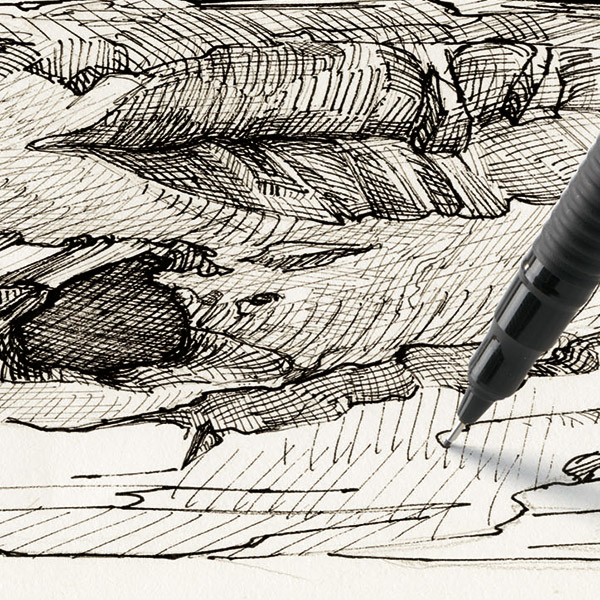Transcribing visual subtleties with a minimum of material is what makes drawing so challenging. Follow the guide!
- Home
- Expert advice
- Drawing: shading and light
1. Enhancing gray values
Enhancing your grays means defining the different tones in your drawing, that is, the different gray tones it includes.
You can use graphite pencils with various degrees of hardness. For example:
- a very hard 9H pencil, for a very light gray
- a medium hard 2B pencil, for an intermediate gray
- a very soft 9B pencil, for a dark gray
You can also draw a wide range of tones with a single pencil (2B, for example). How it works: press down more or less hard to vary the intensity of your stroke. A very attractive solution, both financially and artistically!

Create a scale of values
Start by forming a square by making a few light strokes with your pencil. Form a new square, intensifying the strokes. Keep on going, making each new square darker than the preceding one. Result: you can obtain a palette of different tones, from the white of the paper to the square with the most intensive gray.


2. Shading and light
To create shaded areas: hatch the area to be shaded. This is one of the most often used methods for creating shading. Simply juxtapose pencil strokes.
Simple parallel hatching: the strokes are parallel to each other. The closer they are, the darker the hatched area. Conversely, the farther apart they are, the lighter the hatched area.
Cross-hatching: to intensify a hatched area, you can draw a new hatching series, this time perpendicular to the previous ones.
Freehand hatching: as its name indicates, it is drawn freehand. The lines crisscross and intersect.
Creating areas of light: remove excess drawing material with an eraser to lighten your gray.
Tip: To work with small size areas, you can shape a kneaded eraser or trim a classical eraser with a utility knife. Erase, then smooth by stumping with your finger or using a stump.
Recommended product:
1557® 180g/m²
See also :
Drawing
Drawing: Stumping
Explore more tutorials on this technique
Drawing
The basics of good inking
Drawing
Drawing a Christmas Pin-Up
Drawing
Composing Landscapes
Drawing
The travel album
Drawing
Composing a still life
Drawing
Paint and Draw Outdoors
Drawing
Drawing: Secrets of perspective
Drawing
Color Basics
Drawing
Eraser drawing
Drawing
Hatch drawing
Drawing
Drawing: Human proportions
Drawing
Drawing: Stumping
Drawing
Drawing a face
Drawing
Drawing a line
Drawing
Drawing: Determining proportions
Drawing
Architectural drawing
Drawing
Drawing: Selecting your material
Drawing
Preparing your Drawing material
Drawing
Choosing your drawing media
Drawing
Drawing: Create a sketchbook
Drawing
Select your drawing paper
Drawing
The 6 essential steps in drawing
